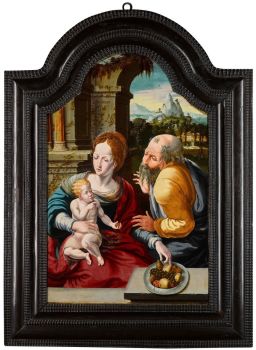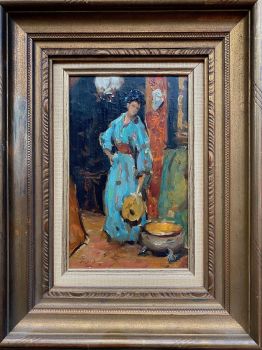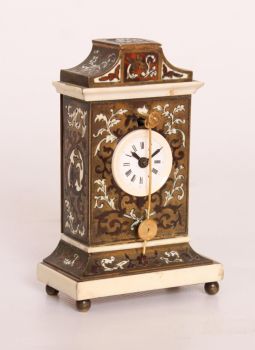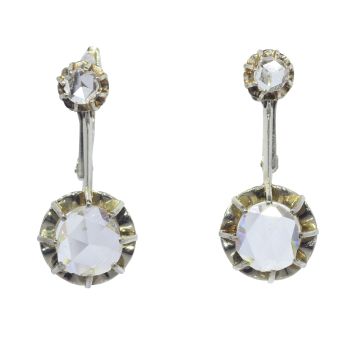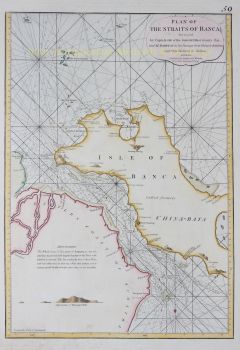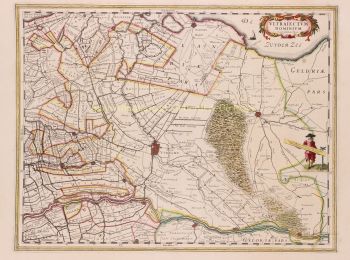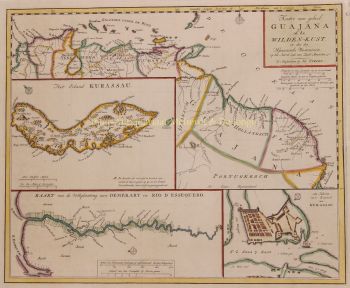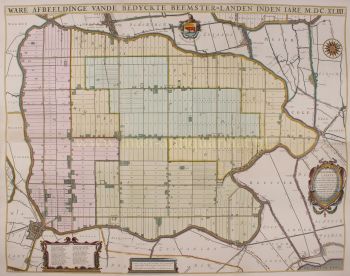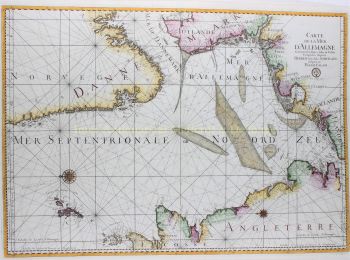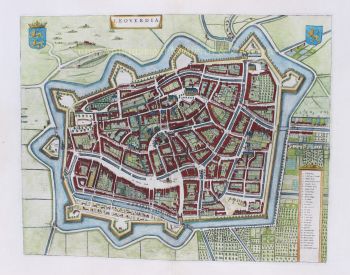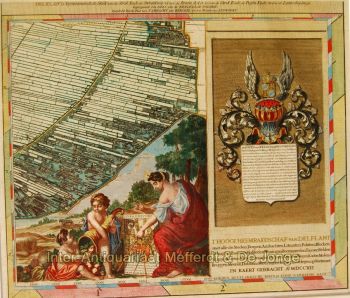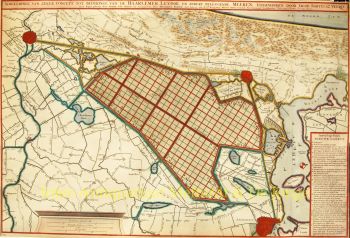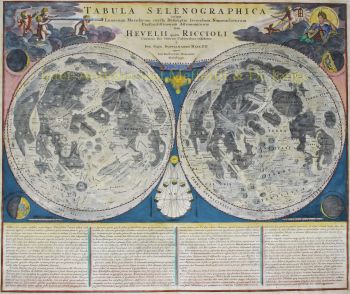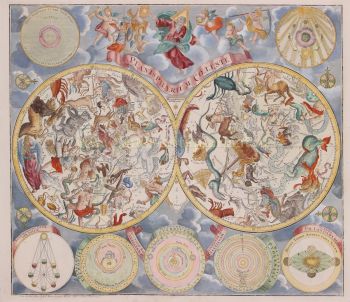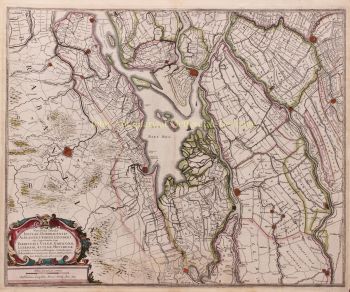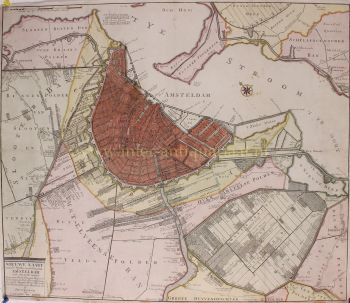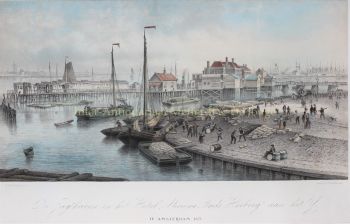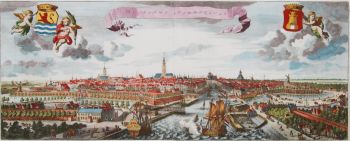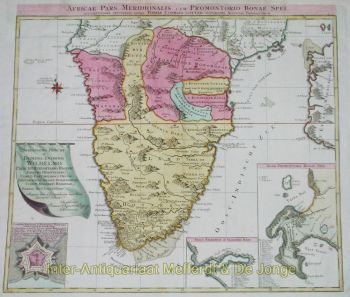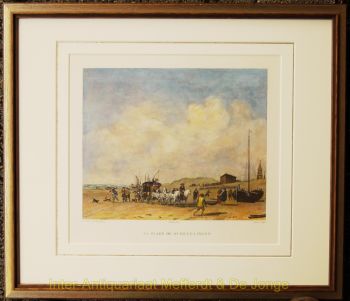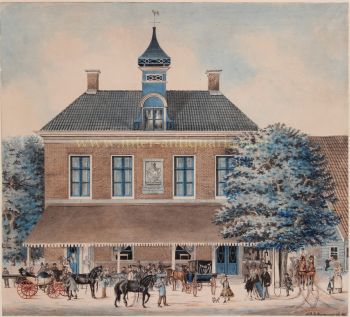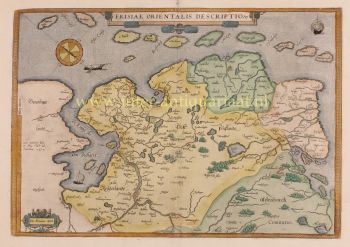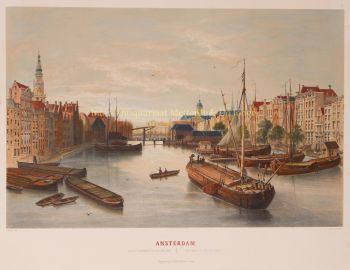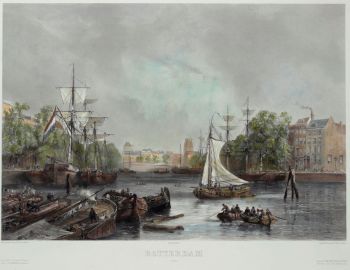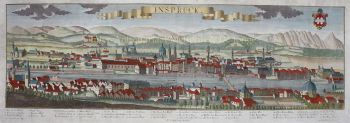Impero del Giappone 1720
Artista Sconosciuto
€ 2.450
Inter-Antiquariaat Mefferdt & De Jonge
- A proposito di opere d'arte“Imperium Japonicum…” [“The Empire of Japan, here on a Japanese map with sixty six regions, described by Adriaan Reland.”] Copper engraving made by Balthasar Ruyter, published after 1720 in Amsterdam by Reinier and Josua Ottens. Coloured by a later hand. Size: 49 x 60 cm. Adriaan Reland (1676-1718) was a professor at the University of Utrecht. Reland used Japanese maps, most notably a map by Ishakawa Ryusen from the library or Benjamin Dutry (1668-1751), a former director of the Dutch East India Company (VOC). In the text under the map Reland writes that Japanse woodblock-printed maps are less accurate: “they draw the outlines of the coast lines with a coarser pen, because they lack the European tools”. Reland emphasises that he only used Japanese maps for place-name accuracy. The map was originally published in a smaller size in Utrecht. The copper plate of this third state in folio format however, was bought by Amsterdam publisher Joachim Ottens in 1720, whose sons Reinier and Josua published it in their atlases thereafter. Reland’s map of Japan was the first map to use Sino-Japanese characters [Kanji] on a European printed map and represents a radical departure from prior European maps of Japan. The map is dedicated to Jean-Paul Bignon, librarian to King Louis XIV of France who had ordered it to be made. Bignon’s coat of arms is prominently depicted. The inset map at the bottom right shows (the bay of) Nagasaki, “with the island where the Dutch settled”. Dejima island became a factory for the Dutch East India Company in 1641 and was the only place of contact between Japan and Europe until the end of the 1850s. The inset map is embellished with 20 coats of arms of Japanese noble families and headed by the imperial coat of arms. Price: Euro 2.450,-
- A proposito di opere artista
Può succedere che un artista o un creatore sia sconosciuto.
Alcune opere non sono determinate da chi sono state realizzate o sono state realizzate da (un gruppo di) artigiani. Esempi sono statue dell'antichità, mobili, specchi o firme non chiare o leggibili ma anche alcune opere non sono affatto firmate.
Inoltre puoi trovare la seguente descrizione:
•"Attribuito a …." A loro avviso probabilmente opera dell'artista, almeno in parte
•“Studio di ….” o “Officina di” A loro avviso un'opera eseguita nello studio o nella bottega dell'artista, eventualmente sotto la sua supervisione
•“Cerchio di…” A loro avviso un'opera del periodo dell'artista che mostra la sua influenza, strettamente legata all'artista ma non necessariamente al suo allievo
•"Stile di..." o "Seguace di..." A loro avviso un'opera eseguita nello stile dell'artista ma non necessariamente da un allievo; può essere contemporaneo o quasi contemporaneo
•“Modalità di…” A loro avviso un'opera nello stile dell'artista ma di epoca successiva
•"Dopo …." A loro avviso una copia (di qualsiasi data) di un'opera dell'artista
•“Firmato…”, “Datato…” o “Iscritto” A loro avviso l'opera è stata firmata/datata/inscritta dall'artista. L'aggiunta di un punto interrogativo indica un elemento di dubbio
•"Con firma....", "Con data...", "Con iscrizione..." o “Riporta firma/data/iscrizione” a loro avviso la firma/data/iscrizione è stata aggiunta da qualcuno diverso dall'artista
Sei interessato ad acquistare questa opera d'arte?
Artwork details
Related artworks
Artista Sconosciuto
Braccialetto di diamanti del XVIII secolo con intagli di 2000 anni1790
€ 23.000Adin Fine Antique Jewellery
 A cura di
A cura diDanny Bree
Artista Sconosciuto
A Dutch colonial Indonesian betel box with gold mounts1750 - 1800
Prezzo su richiestaZebregs & Röell - Fine Art - Antiques
1 - 4 / 12- 1 - 4 / 24
- 1 - 4 / 12



